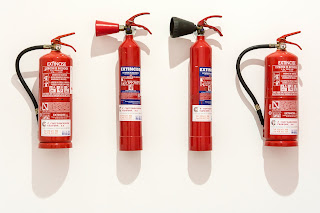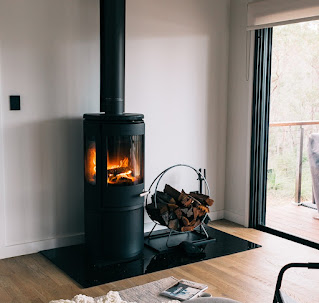The Best Fire Extinguisher for Your Kitchen Grease Fire Starting a grease fire in your kitchen can be scary, but there are things you can d...
The Best Fire Extinguisher for Your Kitchen Grease Fire
Starting a grease fire in your kitchen can be scary, but there are things you can do to reduce the risk of having one. And if you do have one, there are ways to put it out quickly and effectively so that it doesn’t spread and cause even more damage.
One option is using a wet chemical fire extinguisher, which works well on grease fires because the foam it creates clings to the flames and prevents oxygen from fueling them. Keep reading to learn more about how to identify and prevent kitchen grease fires, and how to use an extinguisher on one if they occur.
Class A: Ordinary Combustibles
A small fire extinguisher is perfect for kitchen fires. To be clear, this is only a small fire extinguisher. Kitchen fires are usually class A fires, which means they're ordinary combustibles such as food grease, paper towels, and napkins. So you want to use a Class A fire extinguisher in the kitchen because it can put out those types of fires.
Now that we know what type of fire we're fighting, let's look at the size of your kitchen. If you have a small kitchen with little more than your stove and maybe a few countertops around it then grab one from Home Depot or Lowes that has 5-10 pounds worth of pressure.
If your kitchen is larger with more appliances or ovens then you'll need something bigger like an ABC or BC model (5-20 pounds) depending on how much space there is in your kitchen to move around. You might also consider getting two different sizes just so you have options if things start going south really quickly.
Class B: Flammable Liquids
A Class B fire extinguishant, such as Foam or Carbon Dioxide, is best suited to extinguish kitchen grease fires. Kitchen grease fires can be especially dangerous because of the high heat and fat content that make these types of fires very difficult to put out.
Kitchen fires often flare up with a sudden and violent intensity, so it's important that you have a small fire extinguisher in your kitchen. You'll also want to buy one that's rated for Class B Fires; otherwise, it may not work on your particular type of fire. Never use water on a grease fire because it will only create steam that will fan the flames!
Class C: Energized Electrical Equipment
Kitchen fires are usually caused by cooking grease or oil, which can burn at very high temperatures. If you are lucky, these fires may be small enough to put out with a fire extinguishant from a small fire extinguisher for the kitchen.
This type of extinguisher has an agent that disrupts the chemical reaction of the burning fuel, like some types of foam or dry chemicals.
If you have a large kitchen grease fire, it is best to use a class K kitchen fire extinguisher. These are typically pressurized water-based agents designed to put out fires in kitchens and other areas where combustible cooking materials may be present. A class K kitchen fire extinguishant should give you enough time to leave your home and get help before the situation becomes dangerous.
Class D: Combustible Metals
A Class D fire extinguisher is the best fire extinguisher for kitchen grease fires. These are rated as combustible metal fires, and a B-rated extinguisher will not work on this type of fire. Additionally, the size of the fire extinguisher should match the size of your kitchen. If you have a very small kitchen, it may be best to buy a small fire extinguisher.
Class K: Cooking Oils and Greases
A Class K fire extinguisher is best used to extinguish kitchen grease fires. These fires can be very dangerous and fast-spreading because they are often fueled by oils and greases, which are a liquid that burns quickly when ignited. Kitchen grease fires may occur in deep fryers, ovens or other cooking appliances.
The first step in putting out a grease fire is to turn off the stove or oven, if possible. If not, throw water on the flames. If you have a Class K extinguishing agent handy, spray it onto the flames with a sweeping motion of your arm. Do not aim at individual flaming objects! If there's no Class K available, use a small fire extinguisher for the kitchen, ABC dry chemical extinguisher, or a CO2 cartridge system.














COMMENTS